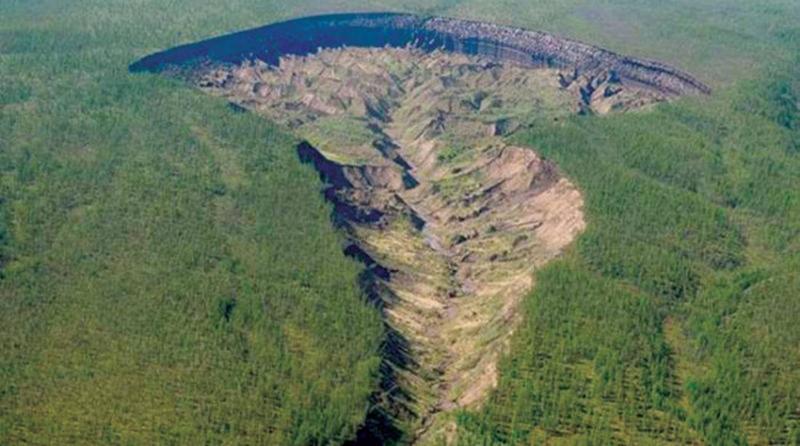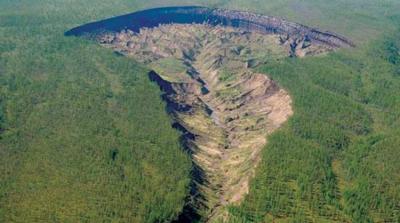Scientists have discovered that the "Hell Gate," a massive crater located in Siberia, is expanding faster than expected due to climate change effects. This crater, known as "Batagaika," is situated in the frozen Yana Highlands and covers an area of approximately 200 acres. It can be clearly seen in satellite images. The crater was first observed in photos taken in 1991, and since then it has been widening in both diameter and depth due to the thawing permafrost caused by global warming.
In a new study published in the journal "Geomorphology," ice scientist Alexander Kizeyakov and his team utilized remote sensing techniques and field data from laboratory samples collected between 2019 and 2023 to create a three-dimensional model of the permafrost thawing rate. The results showed that the depth of the crater reaches 300 feet, and it cannot go deeper as the permafrost has reached the bedrock layer at the bottom. However, the crater continues to expand outward at an accelerating rate. According to Kizeyakov, the volume of this retrogressive thaw slump is increasing by about one million cubic meters annually.
This expansion poses a threat to the nearby Batagay River, as it increases the erosion of riverbanks and impacts the surrounding environment. Additionally, Kizeyakov and his team point out that the expanding crater could contribute to increased greenhouse gas emissions due to the release of frozen nutrients into the atmosphere. Scientists estimate that between 4,000 to 5,000 tons of previously frozen organic carbon is being released annually, and this number is likely to increase each year as permafrost continues to thaw. This phenomenon heightens the risks associated with climate change and its effects on ecosystems and the global environment.




